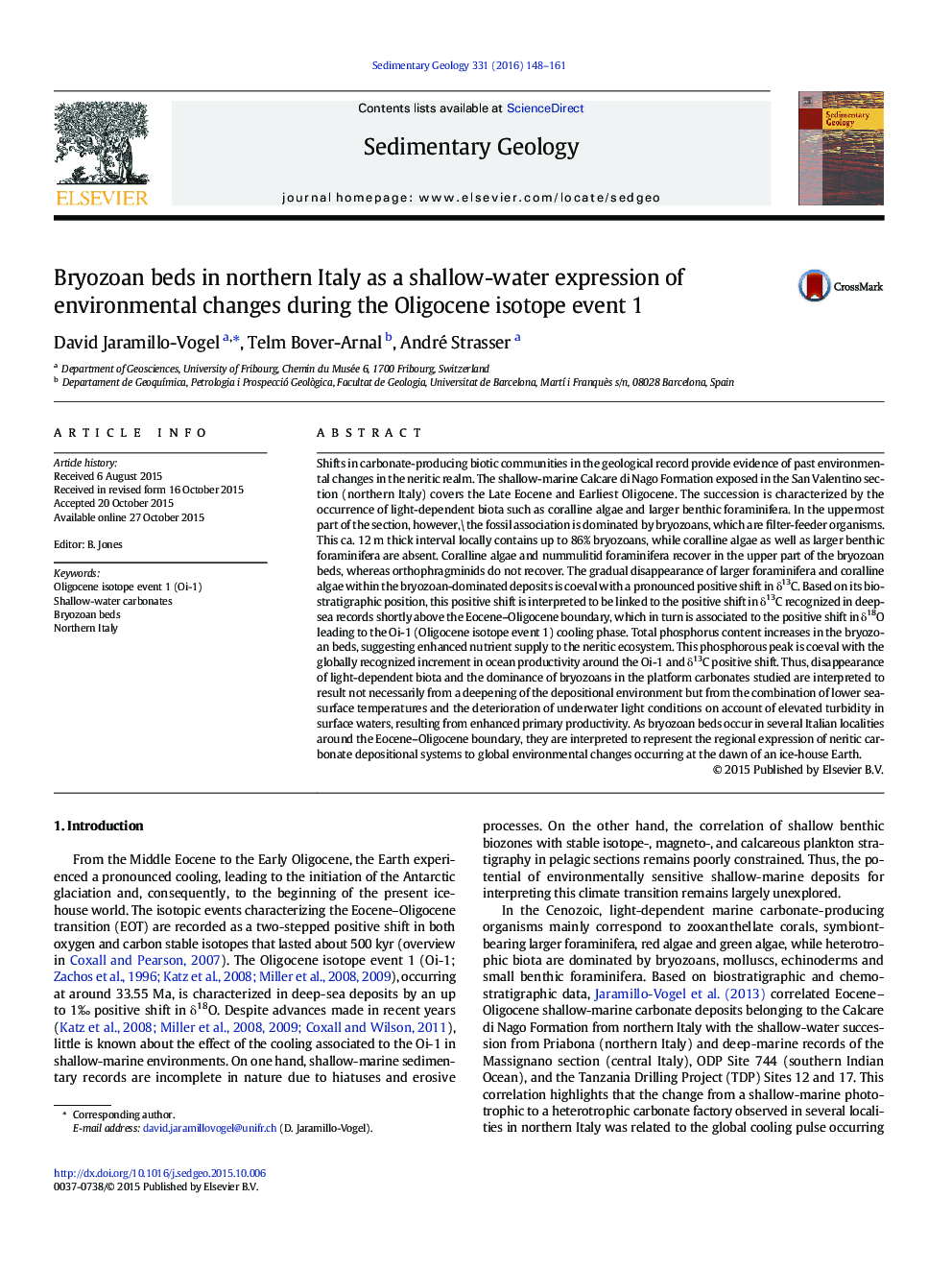| کد مقاله | کد نشریه | سال انتشار | مقاله انگلیسی | نسخه تمام متن |
|---|---|---|---|---|
| 4689141 | 1636032 | 2016 | 14 صفحه PDF | دانلود رایگان |
Shifts in carbonate-producing biotic communities in the geological record provide evidence of past environmental changes in the neritic realm. The shallow-marine Calcare di Nago Formation exposed in the San Valentino section (northern Italy) covers the Late Eocene and Earliest Oligocene. The succession is characterized by the occurrence of light-dependent biota such as coralline algae and larger benthic foraminifera. In the uppermost part of the section, however,\ the fossil association is dominated by bryozoans, which are filter-feeder organisms. This ca. 12 m thick interval locally contains up to 86% bryozoans, while coralline algae as well as larger benthic foraminifera are absent. Coralline algae and nummulitid foraminifera recover in the upper part of the bryozoan beds, whereas orthophragminids do not recover. The gradual disappearance of larger foraminifera and coralline algae within the bryozoan-dominated deposits is coeval with a pronounced positive shift in δ13C. Based on its biostratigraphic position, this positive shift is interpreted to be linked to the positive shift in δ13C recognized in deep-sea records shortly above the Eocene–Oligocene boundary, which in turn is associated to the positive shift in δ18O leading to the Oi-1 (Oligocene isotope event 1) cooling phase. Total phosphorus content increases in the bryozoan beds, suggesting enhanced nutrient supply to the neritic ecosystem. This phosphorous peak is coeval with the globally recognized increment in ocean productivity around the Oi-1 and δ13C positive shift. Thus, disappearance of light-dependent biota and the dominance of bryozoans in the platform carbonates studied are interpreted to result not necessarily from a deepening of the depositional environment but from the combination of lower sea-surface temperatures and the deterioration of underwater light conditions on account of elevated turbidity in surface waters, resulting from enhanced primary productivity. As bryozoan beds occur in several Italian localities around the Eocene–Oligocene boundary, they are interpreted to represent the regional expression of neritic carbonate depositional systems to global environmental changes occurring at the dawn of an ice-house Earth.
Journal: Sedimentary Geology - Volume 331, January 2016, Pages 148–161
